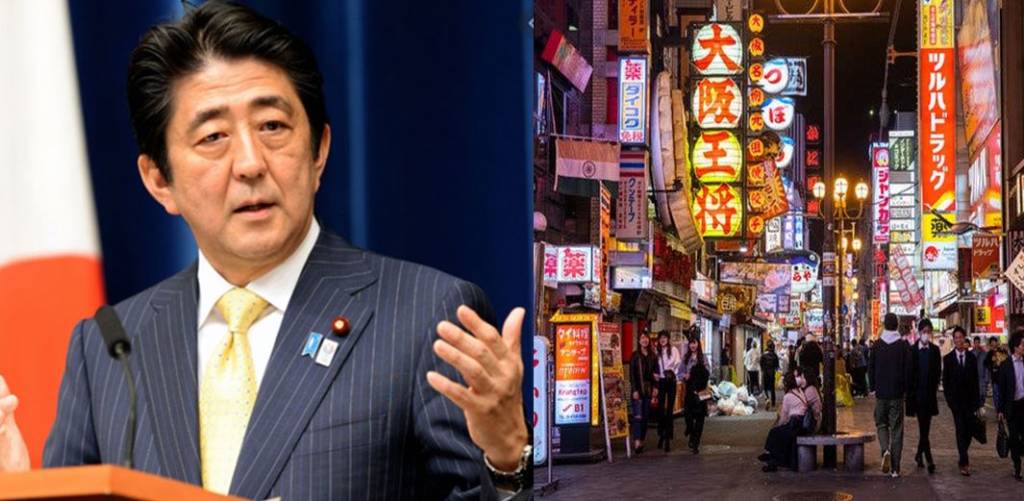Japan, the land of the Rising Sun, is making a massive move towards reclaiming its position as the second-biggest economy in the world. After years of stagnancy and timid growth, Japan is witnessing a resurgence in nationalist sentiment and an urge to reclaim what it has lost over the past three decades. A post-Pandemic world will see Tokyo opening up itself to immigrants to seek talent from across the world to fuel its own economy.
Japan, traditionally an isolationist country that has not been very comfortable welcoming immigrants, is heading towards some major policy change. By the 1990s, Japan had become the second-largest economy of the world and was slated to overtake even the United States. But then the recession or the Lost Decade happened and China dethroned Japan. The East Asian country has been held back by a rapidly ageing and declining workforce. And now Tokyo wants to bring in more immigrants to solve this issue.
The financial crisis hasn’t been the only issue for Japan. Political instability has also contributed to the decline, as the country was governed by 17 different Prime Ministers between 1989 and 2012. The fabled economic bubble of the 1980s might have collapsed in Japan, but the current Japanese Prime Minister Shinzo Abe has lent political stability to Tokyo and has also created a nationalist ambition to take the China challenge head-on.
Shinzo Abe intends to dilute the pacifist provisions of the Japanese Constitution and he is also encouraging revisionism. However, revisionism and dilution of pacifist provisions alone cannot create the kind of national power that Tokyo needs to be in order to compete with China. Japan must reclaim its lost economic prowess for which it has to address the issues of labour shortage, social security needs of an increasingly older population which is further increasing public debt that is now more than double the size of Japan’s GDP.
For competing with China, Japan has realised that it must open up. Japan is the oldest society on the planet- not historically but demographically. The median age is 46 years and one-third of the population is above 60 years of age. This is not going to change due to low fertility rates of 1.4 births per woman. By 2060, Japan’s population will further decline to 87 million from the present 126 million, which will mean more older people and a still smaller workforce.
On his part, Abe made the first big move last year. In April 2019, Tokyo formally opened its doors to low-skilled foreign workers after the Diet- Japan’s national legislature amended the Immigration Control and Refugee Recognition Act. This is an attempt to counter Japan’s peculiar issue of more jobs than job-seekers.
Within the Japanese society, the expanding role of immigrants is finding greater acceptance. Today, there are 3 million migrants in Japan and the number has tripled since 1990. Furthermore, the April 2019 move is going to bring in 3,45,000 more immigrant workers to Japan over a five-year period starting 2019.
Shinzo Abe’s move to bring in immigrant workers finds support within Japan. The people of Japan understand that this is not a false notion of humanitarianism, rather a lax immigration policy will address the more pressing issues of demography and declining workforce.
Japan itself is a closed society, but not anti-immigrant. On global indexes, Japan ranks moderately high insofar acceptance and tolerance of migrants is concerned.
Eiji Oguma, a sociologist and historian at Keio University in Tokyo said, “It’s important to understand that Abe’s government introduced these reforms not to change Japanese society, but to sustain Japanese society.” Japanese businesses have also been pushing for such reforms, as they face tricky times when the number of jobs exceeds the total number of job-seekers across all the 47 Prefectures of Japan.
The long-standing financial crisis that has continued since the 1990s forced Shinzo Abe to bring about immigration reforms. And in the COVID context, the Japanese economy has fallen into recession all over again. So, what can Japan do? The natural answer is- drastic and unprecedented measures that can lift the Japanese economy.
Drastic measures have been already unveiled by the Abe administration with Tokyo first pumping in US $2.2 billion to help Japanese manufacturers shift production out of China, and then actually helping 87 companies pack up and leave China. For a long time, Tokyo wanted to cut dependence on Beijing and reclaim its own position as the biggest economic power after the US and now is the opportunity to do it.
Japan is already battling a labour shortfall. More Japanese companies operating from within Japan will mean more manufacturing facilities and more jobs within Japan. Tokyo needs people who can take up these jobs but it doesn’t have a sufficient workforce. It needs immigrants from other parts of Asia, including India and Hong Kong, to take up these excess jobs. Only with more immigrants and a bigger workforce will these companies stay in Japan.
A post-Pandemic Japan will embrace the world. It will invite talent and workers from across the globe. This could virtually mark the re-birth of Japan as a gigantic economic workforce.
